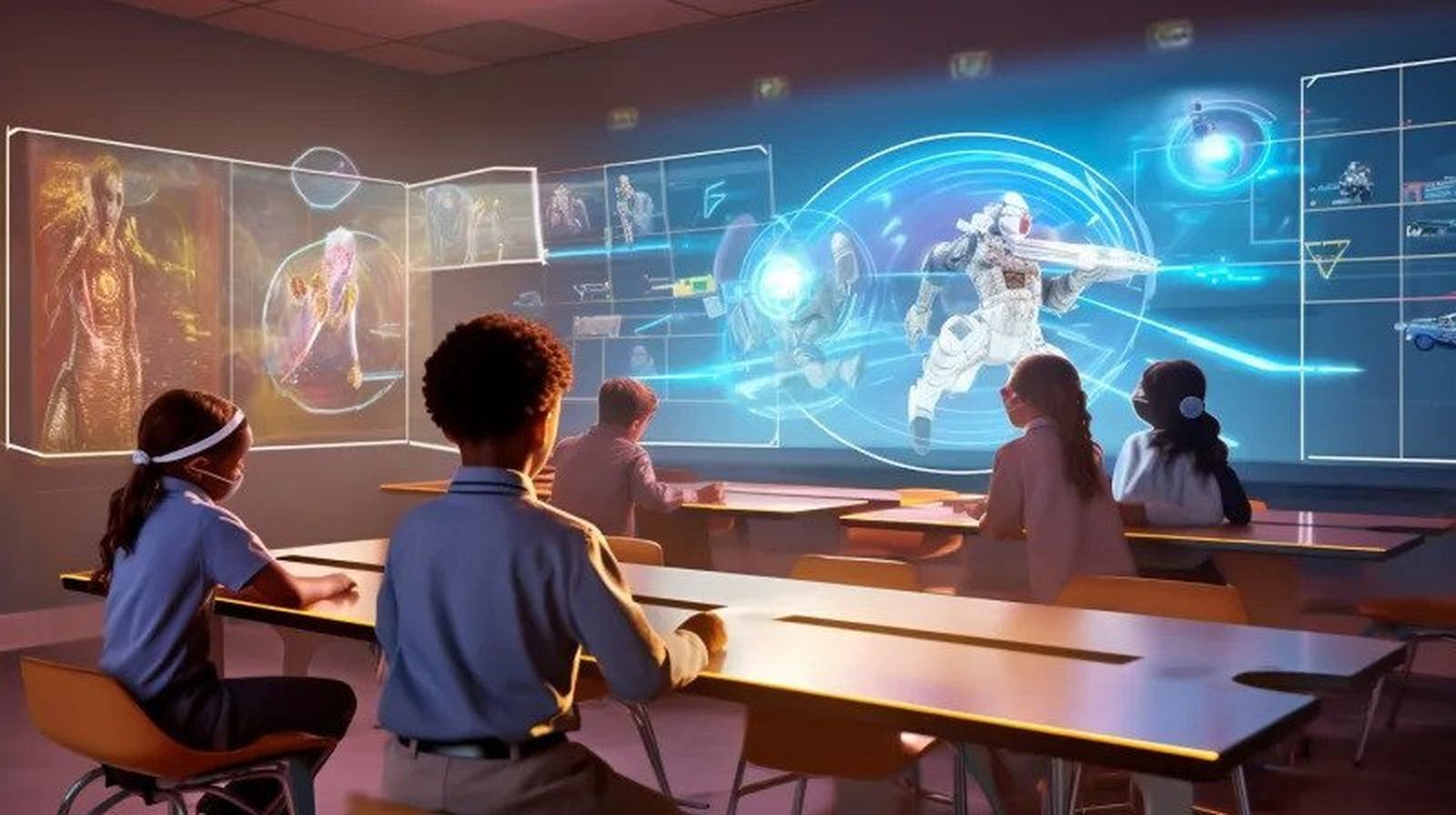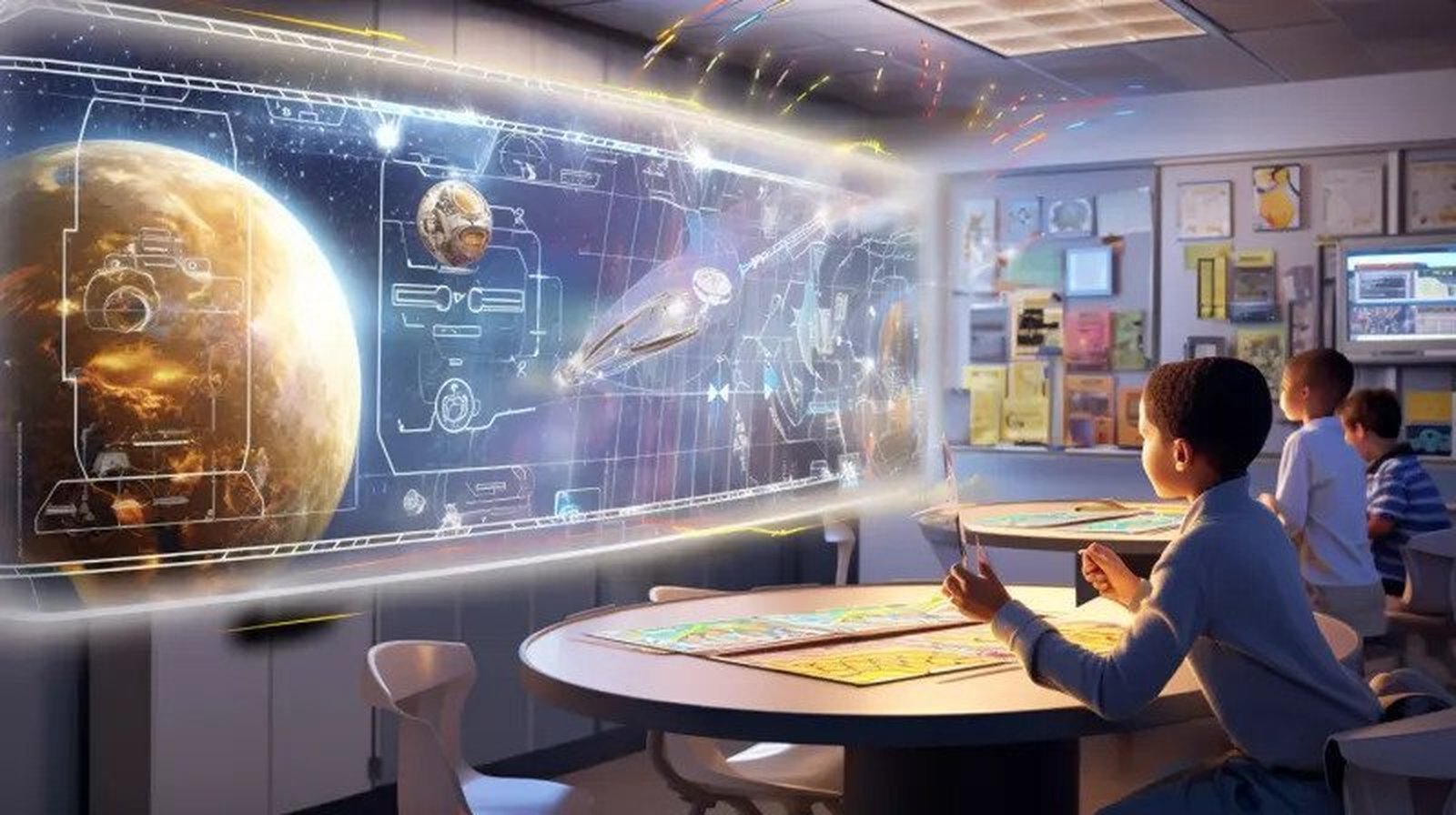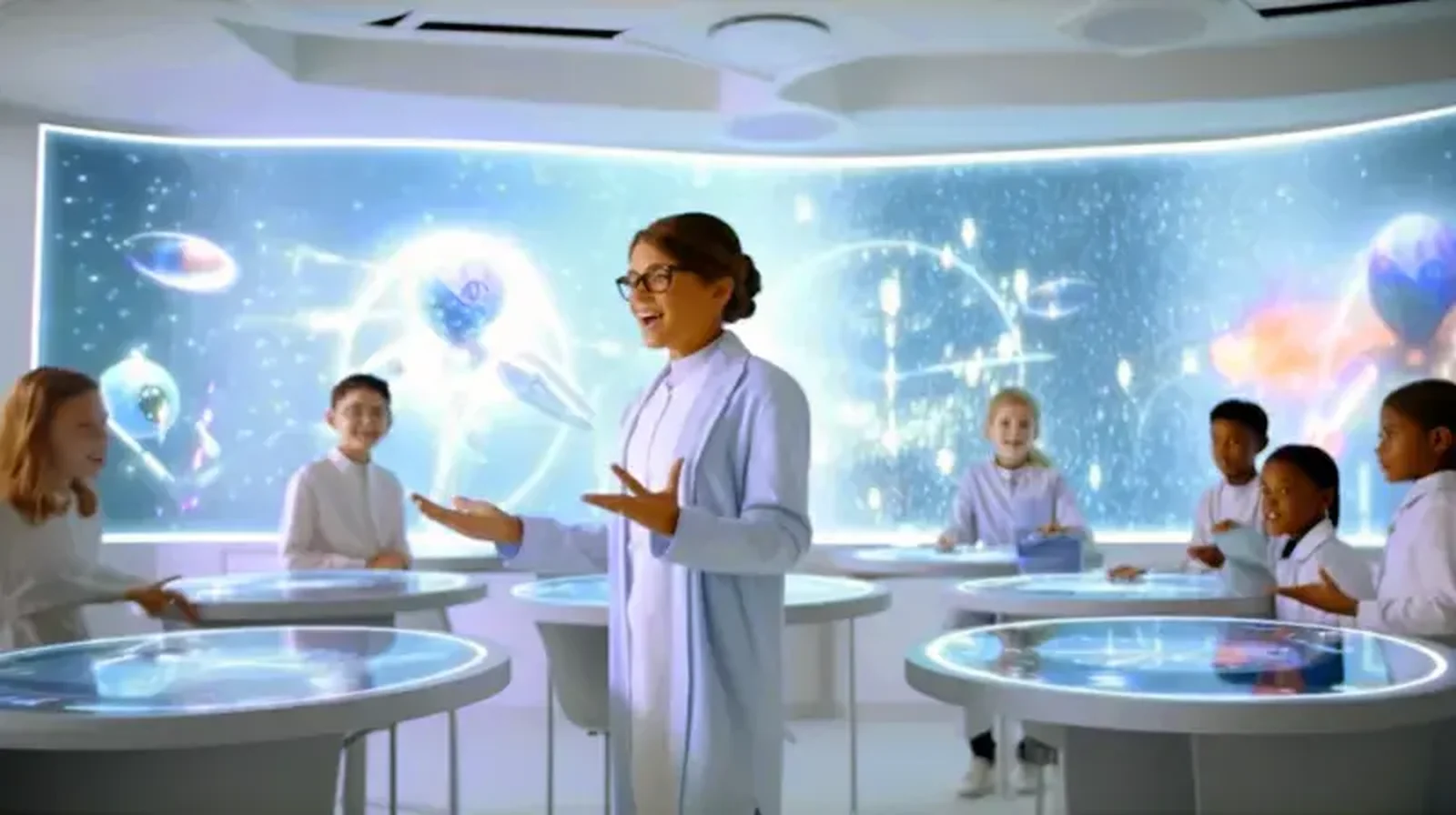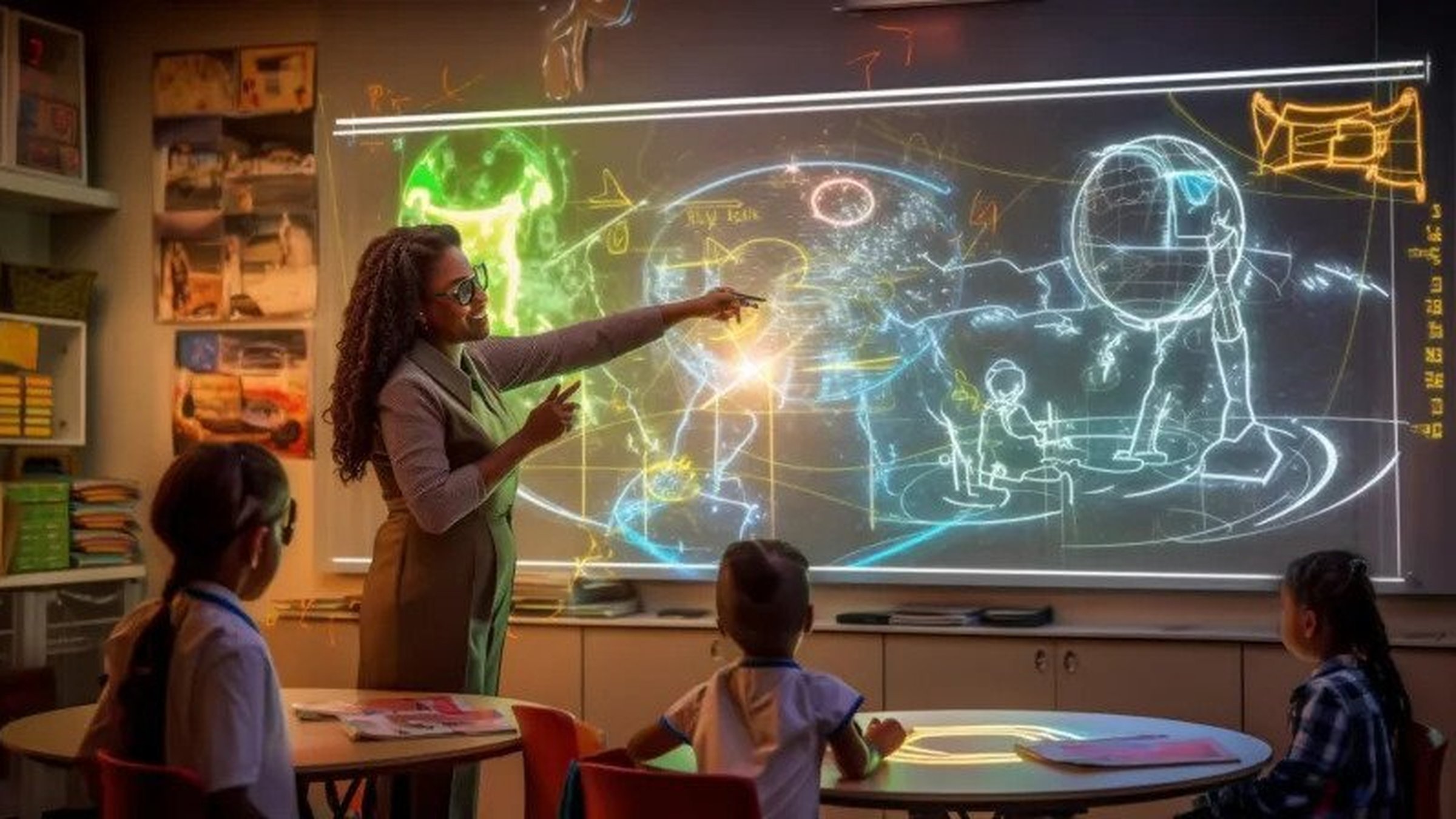Teachers at Notre Dame Preparatory School in Pontiac weigh in on the exciting — and daunting — future of AI in education
PONTIAC — At a 2017 conference held in Lisbon, Portugal, English theoretical physicist, cosmologist and author Stephen Hawking said that too little was known about artificial intelligence to render an accurate prediction of its effect on mankind.
"Success in creating effective AI could be the biggest event in the history of our civilization. Or the worst. We just don’t know. So we cannot know if we will be infinitely helped by AI, or ignored by it and sidelined, or conceivably destroyed by it,” said Hawking, who died a year later at the age of 76.
Today, artificial intelligence is having a moment with the recent development of tools such as ChatGPT, Dall-E 2, Midjourney and Google's Bard, which have spawned even more handwringing about what it all means.
In the world of education, especially as it relates to K-12 schools, AI is quickly transforming the academic landscape. For educators, this coming AI wave is looked upon as either a mystery or a threat — or both.
But according to Melissa York, who is a technology specialist and sixth-grade math teacher at Notre Dame Preparatory School in Pontiac, the explosive popularity of AI, she believes, is and will continue to be a net gain for schools chock full of positives for both teachers and students.
"The opportunities brought by AI, or large language models (LLM), in education are vast and the potential to revolutionize the way educators teach and students learn is nearly unlimited," York said. "These opportunities will be in personalized learning, increased efficiency, improved student engagement, enhanced accessibility and predictive analytics among many others."
Teachers will be most vital
York believe AI will most impact K-12 education in the way students access and retrieve their information, but teachers and staff also will be affected.
"What we must remember more than ever are that teachers will continue to play 'the' key role," York said. "Our job is crucial, especially when it comes to educating our students. The more we embrace LLMs and use it for the right reasons, the more students also will see its importance and will use it for the right reasons as well."

Louise Palardy, a STEM specialist, upper school science teacher and manager of Notre Dame Prep's robotics center, also believes that when the dust settles, AI will be a net gain for schools.
"Major opportunities will be in having the kids learn early in school on how to use the various tools available, as these will no doubt be required for future jobs," Palardy said. "AI can make tasks more efficient. AI can help with students getting started on an assignment and improve engagement. And it can very easily personalize the entire learning process for students."
In a December 2022 article in The Conversation, a U.S.-based news website featuring articles on academic studies of varying topics, author Vitomir Kovanovic writes that one of the the first things educators pointed out after ChatGPT was released was the chatbot’s ability to generate meaningful responses to questions from assessments and exams.
"And it’s often not possible to attribute these responses to a particular source — making it difficult to detect plagiarism," Kovanovic said.
"Concerns didn’t go unnoticed," he continued. "Shortly after ChatGPT’s release, OpenAI announced it was developing a 'digital watermark' to embed into the chatbot’s responses. This kind of watermark is embedded as a digital signal that can identify the content as being AI-generated, and which (in theory) should be difficult to remove."
It's really all about those kinds of guardrails and when they are or will be available, Palardy added.
"It's a valid concern," she said. "Creating assignments that cannot be assisted using Google is already a challenge. As a teacher, I have given a lot of thought to this. I am planning on using AI as a starting point for some assignments. An example might be to have students use AI as a first draft when creating a research project on an occupation in chemistry. The prompt would need to have a variety of thought-out parameters; for example, include a recent quote from a chemist that works in the required field of study with educational requirements, daily job functions and job outlook. I would have them fact-check three to five items in the AI-generated document, then create a summary in their own words."

York said verifying documents is yet another example of AI being both a hindrance and a help.
"One way I might address teacher concerns about students cheating using AI is to provide AI checkers for teachers to use as a tool," she said. "But I would also encourage teachers to keep knowing their students and learn what type of writers they are."
York suggests that teachers can prepare for this new academic frontier by educating themselves and by attending professional development opportunities to learn more about the possibilities of AI and how it can be utilized in the classroom.
"Since AI really began to explode in interest in the world around the end of February, I've continued to see more and more articles, research papers and resources that help prepare teachers for its use in the classroom," she said.
AI and the Marist Way
Closer to home, when it comes to Catholic identity and Notre Dame Prep's school pedagogy, does artificial intelligence actually know and understand what defines the finer points of the Marist philosophy? Does AI know the differences between a Marist and Jesuit education, for example? Can it discern a school mission?
According to York, AI is in fact capable of knowing and sharing the differences of the Catholic, Marist philosophy compared to others, such as the Jesuit philosophy of education, but she believes it's not capable yet of knowing a specific school mission.
For this story, she actually asked ChatGPT to compare the Marist philosophy versus the Jesuit philosophy. The following is the result.
This discussion comes directly from ChatGPT. No editing or corrections have been made, including to a mistake in No. 1 below that notes Saint Marcellin Champagnat as the founder of the Society of Mary (Marists). Fr. Jean Claude Colin, SM, founded the Society of Mary, or Marist Fathers, in 1816.
(From ChatGPT):
The Catholic Marist philosophy and the Catholic Jesuit philosophy are both rooted in the teachings of the Catholic Church and share common elements but also have distinct characteristics. Here are some key differences between the two:
1. Founder and Origins:
• Marist Philosophy: The Marist philosophy traces its origins to the work of Saint Marcellin Champagnat, a French priest who founded the Society of Mary (Marists) in the early 19th century. The Marist philosophy emphasizes simplicity, humility and the importance of a family spirit in education.
• Jesuit Philosophy: The Jesuit philosophy, also known as Ignatian spirituality, is associated with the Society of Jesus (Jesuits) founded by Saint Ignatius of Loyola in the 16th century. The Jesuit philosophy emphasizes intellectual rigor, discernment and the pursuit of excellence in education.
2. Educational Approach:
• Marist Philosophy: Marist education places a strong emphasis on the holistic development of students, nurturing their emotional, spiritual and academic growth. It seeks to create a caring and inclusive educational environment, focusing on the formation of good character and the cultivation of a sense of community.
• Jesuit Philosophy: Jesuit education emphasizes the pursuit of knowledge, critical thinking, and academic excellence. It promotes a rigorous intellectual formation combined with a commitment to social justice, moral development and the formation of "men and women for others" who are engaged in the service of others.
3. Spirituality and Faith Formation:
• Marist Philosophy: Marist education emphasizes a personal and experiential spirituality, fostering a deep connection with God and Mary, the mother of Jesus. It encourages students to develop a strong faith and relationship with God through prayer, reflection and devotion.
• Jesuit Philosophy: Jesuit education focuses on the spiritual development of students through the practice of Ignatian spirituality, which involves reflection, discernment, and the cultivation of a personal relationship with Jesus Christ. Jesuit schools often incorporate the Spiritual Exercises of Saint Ignatius into their educational programs.
4. Pedagogical Methods:
• Marist Philosophy: Marist education values simplicity and practicality in teaching methods. It often emphasizes experiential learning, hands-on activities and the integration of faith and life. Marist educators strive to create a nurturing and supportive learning environment.
• Jesuit Philosophy: Jesuit education places a strong emphasis on intellectual rigor, critical thinking and the pursuit of academic excellence. It often utilizes a rigorous and disciplined approach to education, emphasizing academic rigor, logical reasoning and the pursuit of knowledge.
5. Social Justice and Service:
• Marist Philosophy: Marist education instills a sense of social responsibility and encourages students to be actively engaged in serving others, particularly those who are marginalized or in need. It promotes compassion, solidarity and an awareness of social justice issues.
• Jesuit Philosophy: Jesuit education emphasizes a commitment to social justice and the promotion of a just and equitable society. It encourages students to be men and women for others, working towards the greater good, and addressing societal issues such as poverty, inequality and discrimination.
It's important to note that while there are differences between the Marist and Jesuit philosophies, both seek to provide a Catholic education rooted in the teachings of Jesus Christ and the values of the Catholic Church. Both philosophies aim to form students who are intellectually competent, morally upright and committed to making a positive difference in the world.

Still some limitations
York believes that while AI has made significant strides in transforming education, there are still several technological limitations that, once overcome, could lead to substantial improvements in the educational system. She said some of these limitations include:
- Contextual Understanding: AI systems struggle with contextual understanding and often lack the ability to comprehend the nuances of language and meaning.
- Adaptive Learning: Personalized and adaptive learning is an area where AI has great potential, but significant progress is still needed. Current AI systems often rely on predefined algorithms and struggle to adapt to the unique learning needs, preferences and progress of individual students.
- Ethical Decision-Making: Ethical considerations in AI are crucial in educational settings. AI algorithms need to be transparent, fair and unbiased, especially when making decisions about student performance, assessment or career recommendations. Addressing the challenges of bias, privacy and security is essential to ensure the responsible and equitable use of AI in education.
- Creativity and Critical Thinking: AI has shown promise in automating certain tasks, but still falls short in fostering creativity and critical thinking skills. These higher-order cognitive skills require human-like intuition, imagination and abstract reasoning, which current AI systems struggle to replicate.
- Emotional Intelligence: AI often lacks emotional intelligence, making it challenging to understand and respond appropriately to students' emotional states, such as frustration, confusion or boredom.
- Limited Contextualization: AI-driven educational platforms often focus on specific subjects or tasks, limiting their ability to provide a comprehensive and holistic educational experience. Overcoming this limitation would involve developing AI systems that can integrate knowledge across multiple disciplines and connect diverse concepts to promote interdisciplinary learning.
- Lack of Human Interaction: While AI can automate certain tasks and provide personalized instruction, it cannot fully replace the benefits of human interaction in the learning process. The social and emotional aspects of education, such as peer collaboration, mentoring and teacher-student relationships, are essential for holistic development. Balancing AI's role with human interaction is crucial for creating an effective educational system.
The future of AI in schools
York, a fixture on the Notre Dame Prep campus since 2013, says she cannot predict the future — even with AI's help — but is confident that artificial intelligence will continue to be a net positive influence in the world in general and in the education of the world's youth in particular.

"Really, we are just in the nascent stages of AI, and I see it continuing to evolve and improve," she said. "It has already changed the way humans access information and has transformed numerous aspects of the learning process. What I think is most important, though, is how we as humans think deeply and critically about the types of questions we ask AI."
Palardy agrees with York and thinks AI ultimately will be a ubiquitous and necessary part of education at all levels.
"It will become so ingrained into the academic world that at some point we will not remember what it was like not to use it."
This article was originally published on the website of Notre Dame Preparatory and Marist Academy. It is reprinted with permission.
Copy Permalink
Catholic schools Culture and Media











